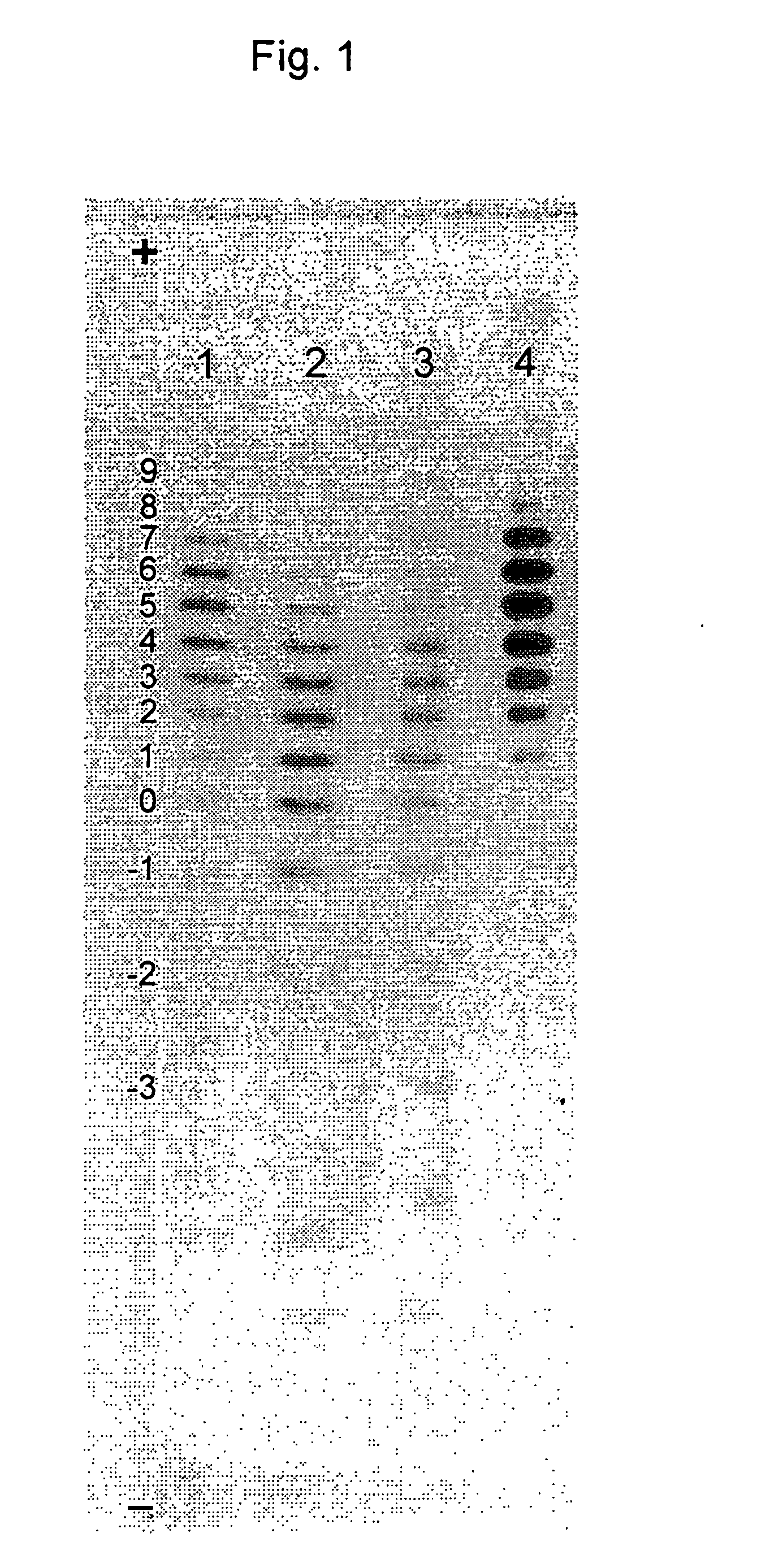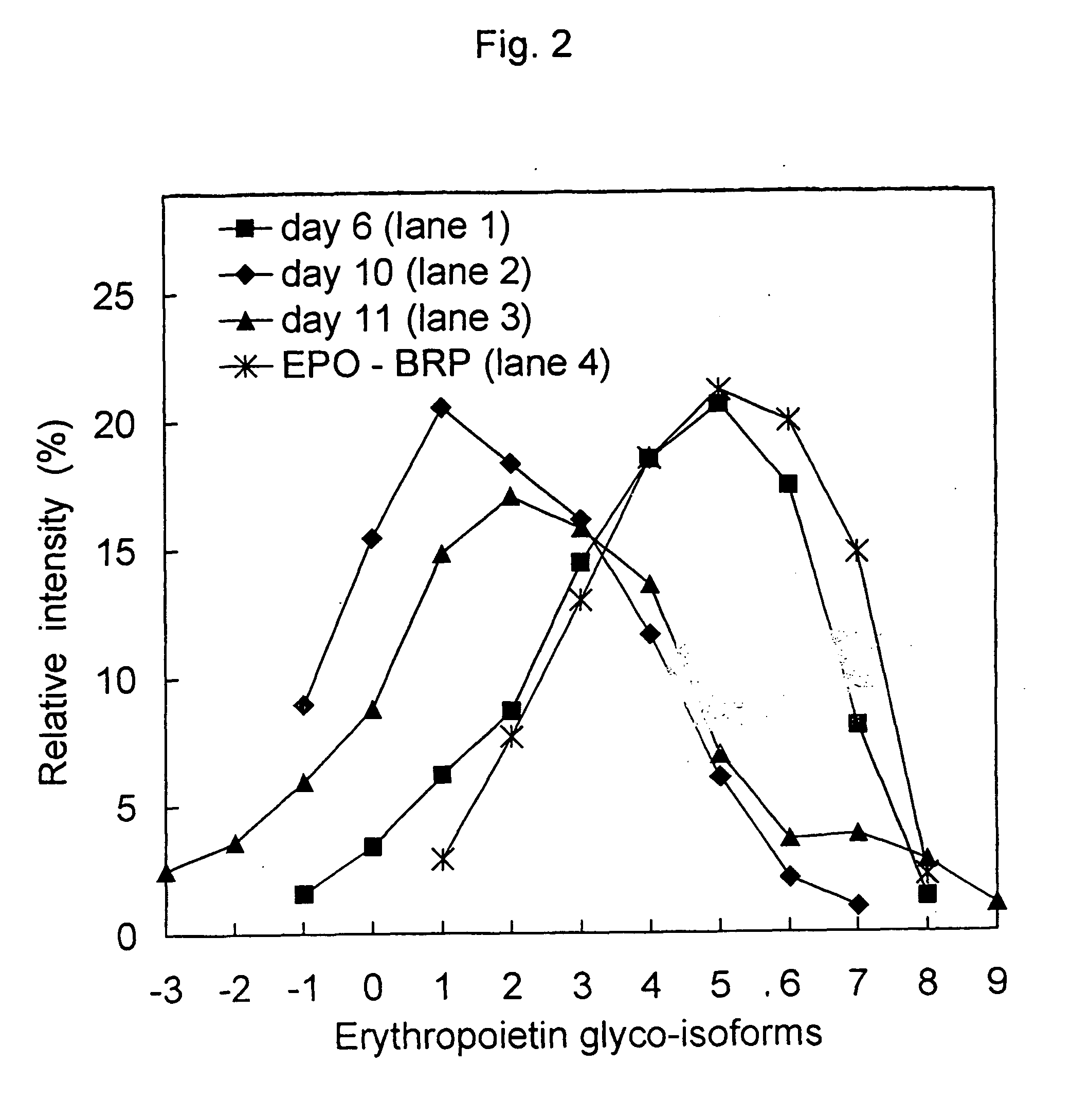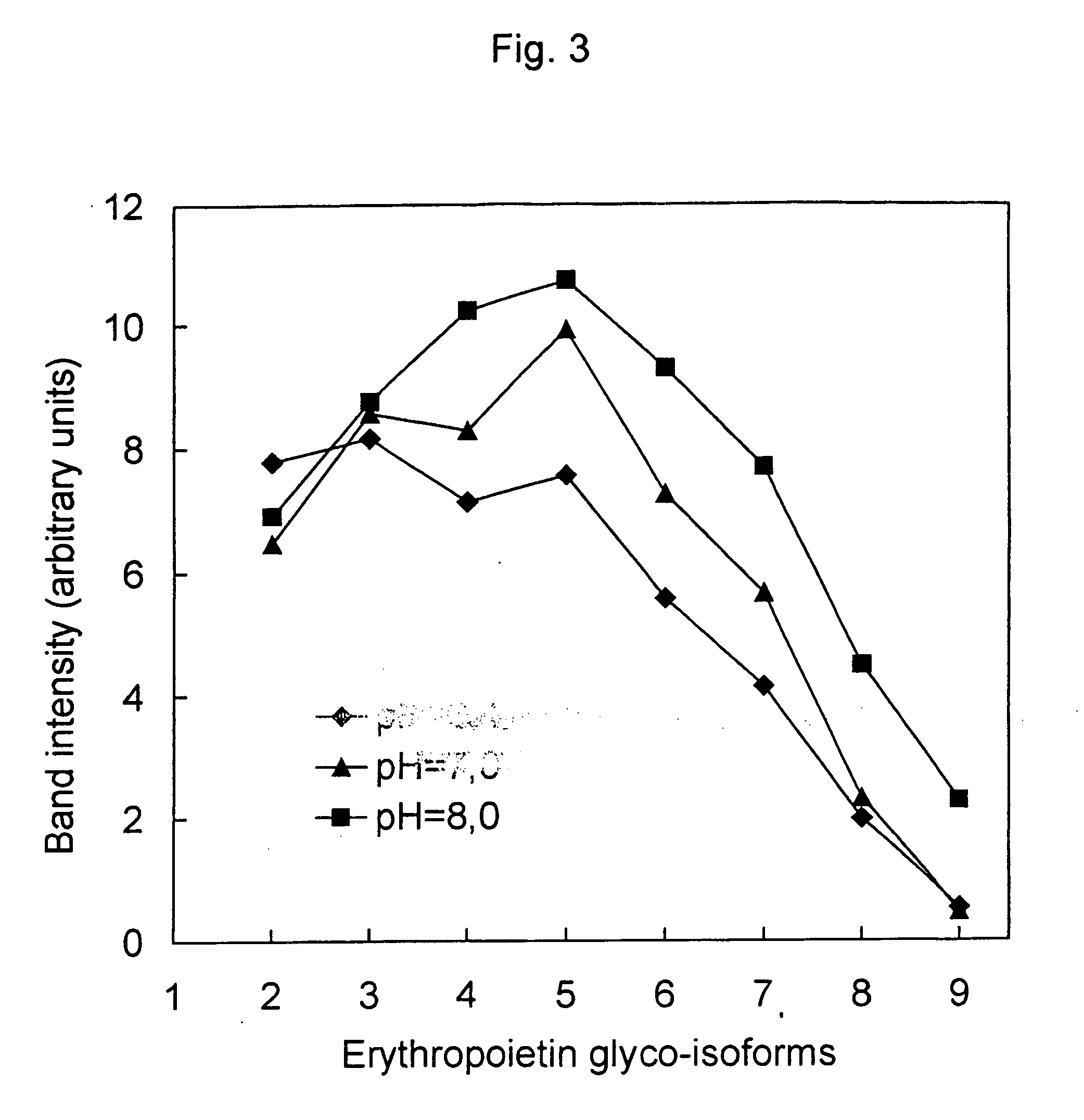Process for the preparation of a desired erythropoietin glyco-isoform profile
a technology of erythropoietin and glycoisoform, which is applied in the direction of material analysis, carrier-bound/immobilised peptide separation, and material analysis by electric/magnetic means, can solve the problems of difficult separation of desired proteins, toxic organic nonpolar solvents, and pollute the environment, and achieve high product quality, high purity, and product specificity. uniform
- Summary
- Abstract
- Description
- Claims
- Application Information
AI Technical Summary
Benefits of technology
Problems solved by technology
Method used
Image
Examples
example 1
[0071] IEF in Polyacrylamide Gel and Immuno-Detection on Nitrocellulose Membrane
[0072] This process was used for the analysis of the profile of EPO glyco-isoforms. The profile of EPO glyco-isoforms could be determined in different samples (in complex mixtures of proteins, in the samples with low concentrations of EPO). The analysis result enabled the direct comparison of EPO quality in different samples. Present Example 1 shows the IEF analysis and immuno-detection of EPO from cell cultures, and the subsequent Examples 2 and 3 show the results from eluates after a particular chromatographic step of the isolation and / or purification of EPO.
[0073] For a sample to be prepared for IEF analysis, it was subjected to diafiltration by using an ultrafiltration membrane (MwCO (molecular weight cut off) 10000 Da). The diafiltration step eliminates molecules smaller than 10 kDa and leads to a desalting and concentration of the sample. The final concentration of the sample is 0.5-1.5 μg EPO in...
example 2
[0091] Changing EPO glyco-isoform profiles by different chromatographic steps
example 2a
Cromatography on matrix-bound stain Cibachron Blue 3G
[0092] EPO producing CHO cell culture suspension was prepared in bioreactor, filtered first through a 10 μm prefilter and than through a 0.2 μm membrane sterilizing filter to separate the cells. The filtrate was loaded on the first chromatographic column by using matrix-bound stain Cibachron Blue 3G. The chromatography was performed under following conditions:
Columnmatrix Blue Sepharose 6 Fast Flow, Amersham PharmaciaBiotech;particle size 45 do 165 μm;CV (column volume) = 7.85 ml,H (column height) = 10 cm, D(column diameter) = 1 cmtemp.room temperatureFlow 1.5 ml / min; 115 cm / hourbuffer A 10 mM Na-phosphate, pH = 7.0buffer B 10 mM Na-phosphate, 2.5M NaCl, pH = 7.0Sample 150 ml; 6 mg
[0093] The column was equilibrated with 5 CV (column volume) of buffer A. After loading of the sample, the column was first washed with 3 CV of buffer A and then with 5 CV of mixture of buffer A and B (90:10). Most of EPO was eluted with buffer B (5...
PUM
| Property | Measurement | Unit |
|---|---|---|
| Magnetic field | aaaaa | aaaaa |
| Temperature | aaaaa | aaaaa |
| Temperature | aaaaa | aaaaa |
Abstract
Description
Claims
Application Information
 Login to View More
Login to View More - R&D
- Intellectual Property
- Life Sciences
- Materials
- Tech Scout
- Unparalleled Data Quality
- Higher Quality Content
- 60% Fewer Hallucinations
Browse by: Latest US Patents, China's latest patents, Technical Efficacy Thesaurus, Application Domain, Technology Topic, Popular Technical Reports.
© 2025 PatSnap. All rights reserved.Legal|Privacy policy|Modern Slavery Act Transparency Statement|Sitemap|About US| Contact US: help@patsnap.com



